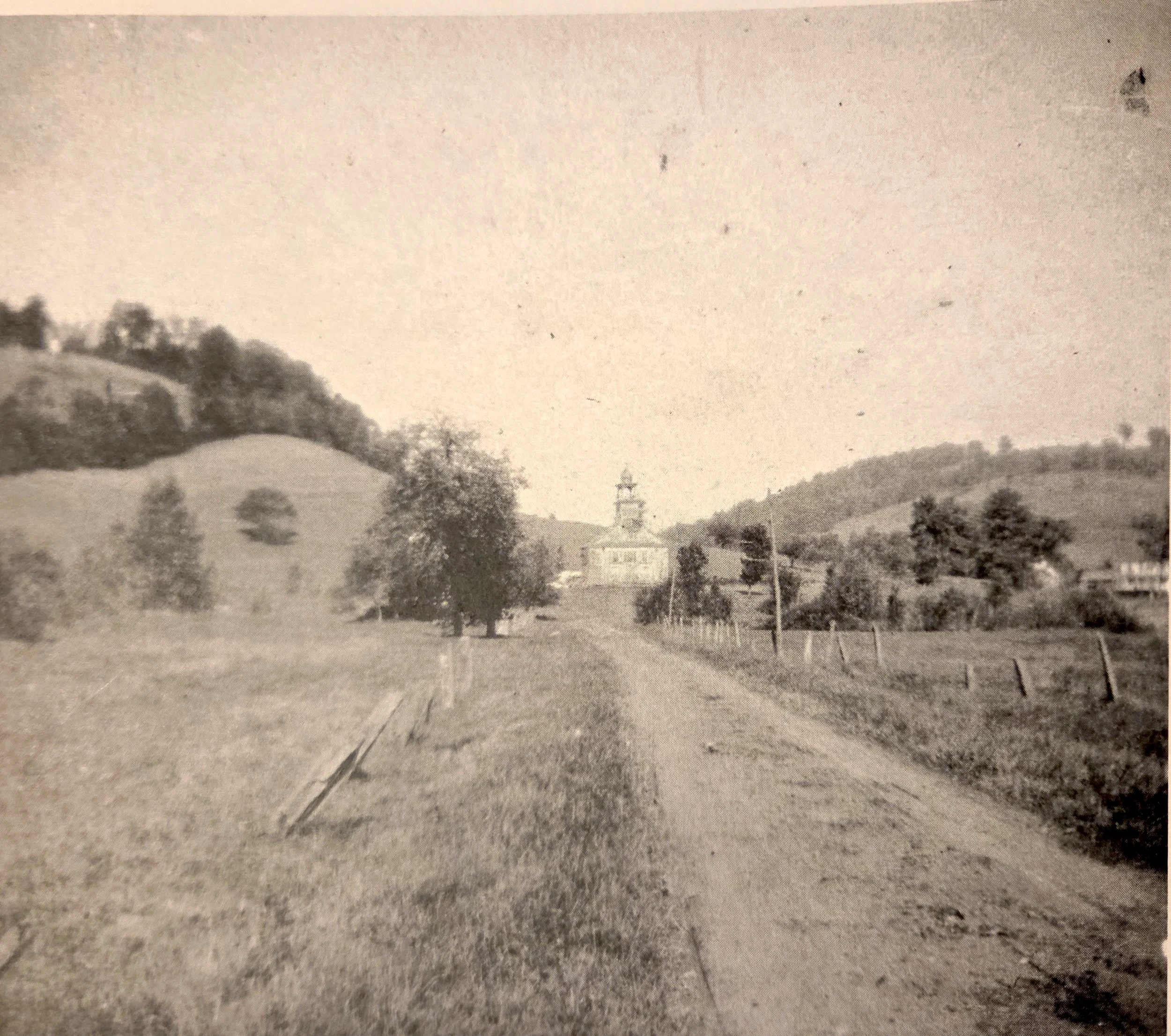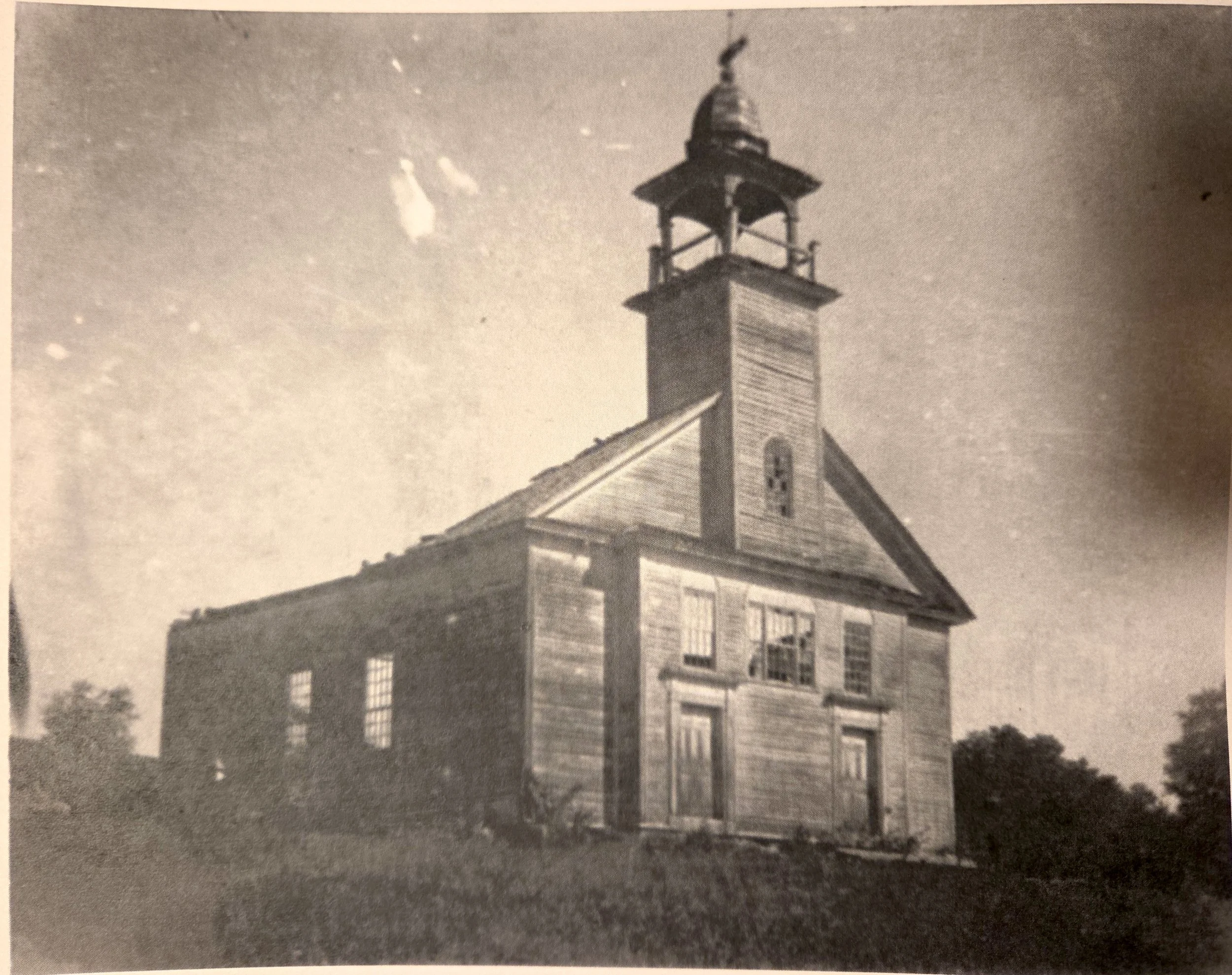The Robinson District
This essay first appeared in the 2020 Strafford Town Report.
Once upon a time in one of the farthest reaches of Strafford, a meetinghouse to rival the Strafford Town House once stood. It had seating for 200 and a gilded dome on its steeple. Anyone traveling a little more than a century ago along Brook Road in Strafford (Faye Brook Road in Sharon), could not have missed it. It was the Robinson Meetinghouse in what is now known as the Robinson District adjacent to the four corners of Strafford, Sharon, Tunbridge, and Royalton.
Eight generations of Robinsons have lived and farmed there, a family with a history that runs like a bright thread through the fabric of Strafford, and included the very first Daniel Robinson, who arrived in Strafford in 1788 from Massachusetts, originally purchasing 200 acres in what is now the Upper Village. We are indebted to his family for much, most notably the land on which now stands the soaring 1799 Town House as well as the Common that lies before it. Much of the planning of the construction of the Strafford Town House took place in the house and inn that he built there, owned for many years by Ned and Vi Coffin and now the home of Susan Cloke.
Robinson Meetinghouse —c.1895
The story of the Robinson District starts in 1809, when Daniel Robinson Jr. (2nd Generation) purchased land near the Sharon town-line on which he and his family, including his father, had settled by 1817 and which would become, for reasons that will become increasingly obvious, the Robinson District. Daniel Robinson Sr. died there in 1820.
By the 3rd generation, Hiram Robinson, son of Daniel Jr., had taken over the farm and provided land for what by 1838 would be the Robinson Meetinghouse. It was built by the Union Society of Strafford and Sharon, a coalition of members of Christian, Baptist and Methodist churches. Its Constitution, patterned on that of the Stafford Town House, established that it would be shared equally by all denominations. All 12 signers of its Constitution, incidentally, were named Robinson, except for one who was related to them by marriage.
Daniel Robinson III, (4th Generation) Hiram’s only son, then inherited the farm, serving the Town in turns as a school director and selectman. He died in 1904 and it was just prior to that time, after the exodus of so many local residents westward from Vermont, that the Robinson Meetinghouse was abandoned and finally dismantled in 1917. It had stood for almost eighty years on the south side of Brook Road between the Robinson Road and the Nutting Road intersections. Little evidence of it remains.
Original Robinson Meetinghouse —Abandoned in 1917
It was Daniel IIl’s son, Willard, (5th Generation) who expanded the farm’s acreage and operations and who commissioned the construction of the famously photogenic “Round Barn,” which was completed in 1917. It is in actuality a 10-sided 3-story structure which was built by a Strafford man, Harvey Hawthorne, using local materials available on the farm, including cement made from stream gravel and mixed with the crushed stones reclaimed from old stone walls and home-grown timber sawn for posts, beams, planks and boards.
The “Round Barn”
Here is a description of the “Round” Barn”: There is on the 1st level a central calving pen surrounded by smaller calf pens with tie-ups for fifty cows. The hillside approach allows access to the 2nd and 3rd levels. Sheep pens were originally arranged around a large central hayloft on the 2nd level. The 3rd level’s central hayloft included a wide circular corridor which allowed wagons to enter, unload, and exit, all without having to back up to turn around.
By 1945, Willard had deeded the farm to two of his sons, Howard and Elmer (6th Generation). A third son, Ralph, took over another farm. (Ralph, incidentally, was the father of Arthur.) Elmer’s son, Daniel VI (7th Generation) and his wife, Marge, continued to live and farm the broad, lush, sweeping valley that straddles Brook Road, establishing their Round Robin Farm, which featured a bed-and-breakfast.
The Robinsons seem always to have had an eye for dramatic landscapes. As celebrated Vermont artist, Sabra Field, wrote after completing her famous Round Barn Quartet painting in 1986: “The subject is a valley, tucked into the hills of Strafford, which is farmed by the Robinson family, surely among the state’s finest stewards of the land.”
The last link in the chain of Robinsons and the Robinson District was broken when Daniel VI and Marge’s daughter, Linda Robinson Enright (8th Generation) and her husband, Dan, sold their property on the south side of Brook Road in 2020.
As might have been expected, there was a family cemetery, the Robinson Cemetery, located on the north side of Brook Road near the Strafford-Sharon town-line and within sight of the meetinghouse. Of the 171 individuals interred there, 20 are Robinsons.



